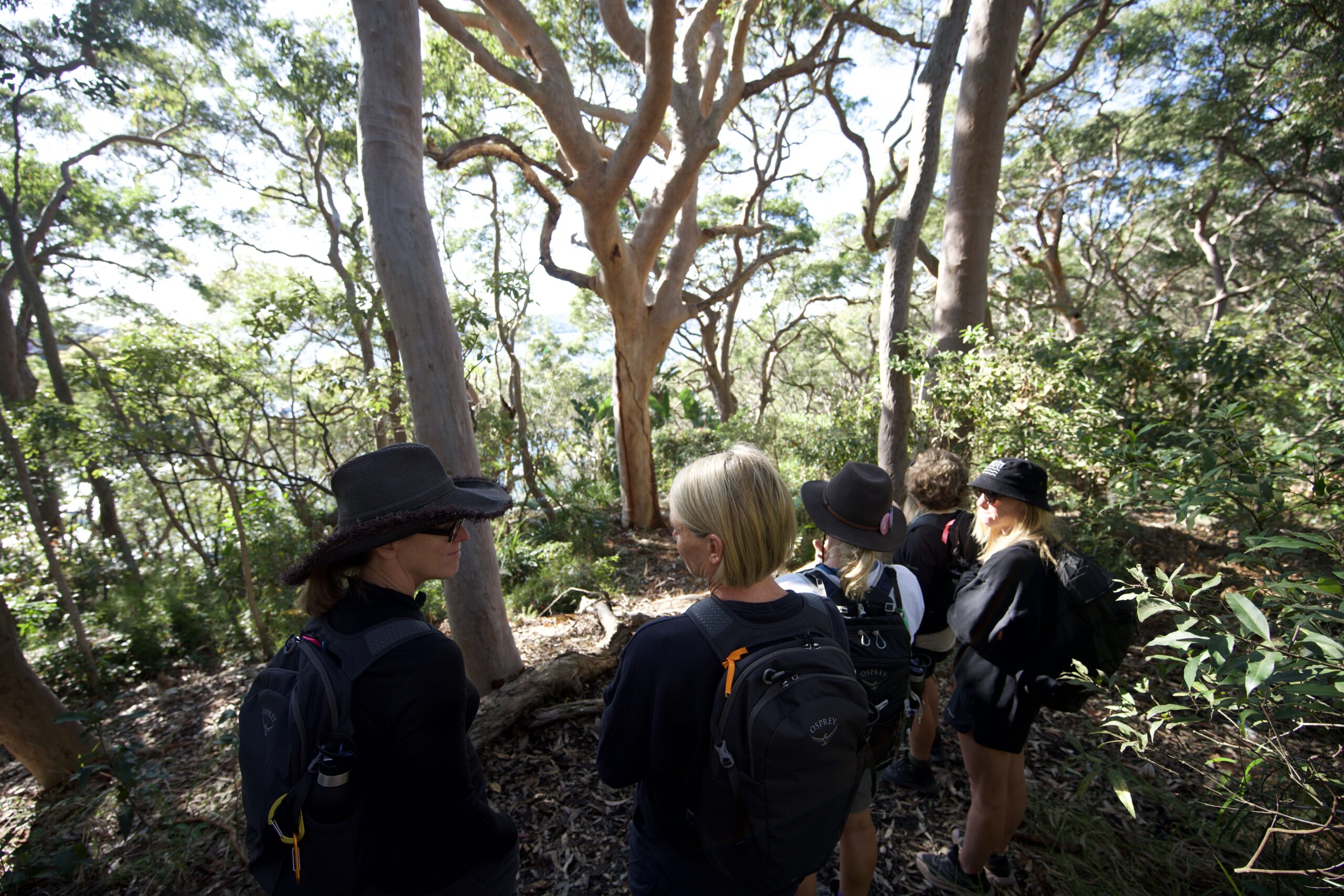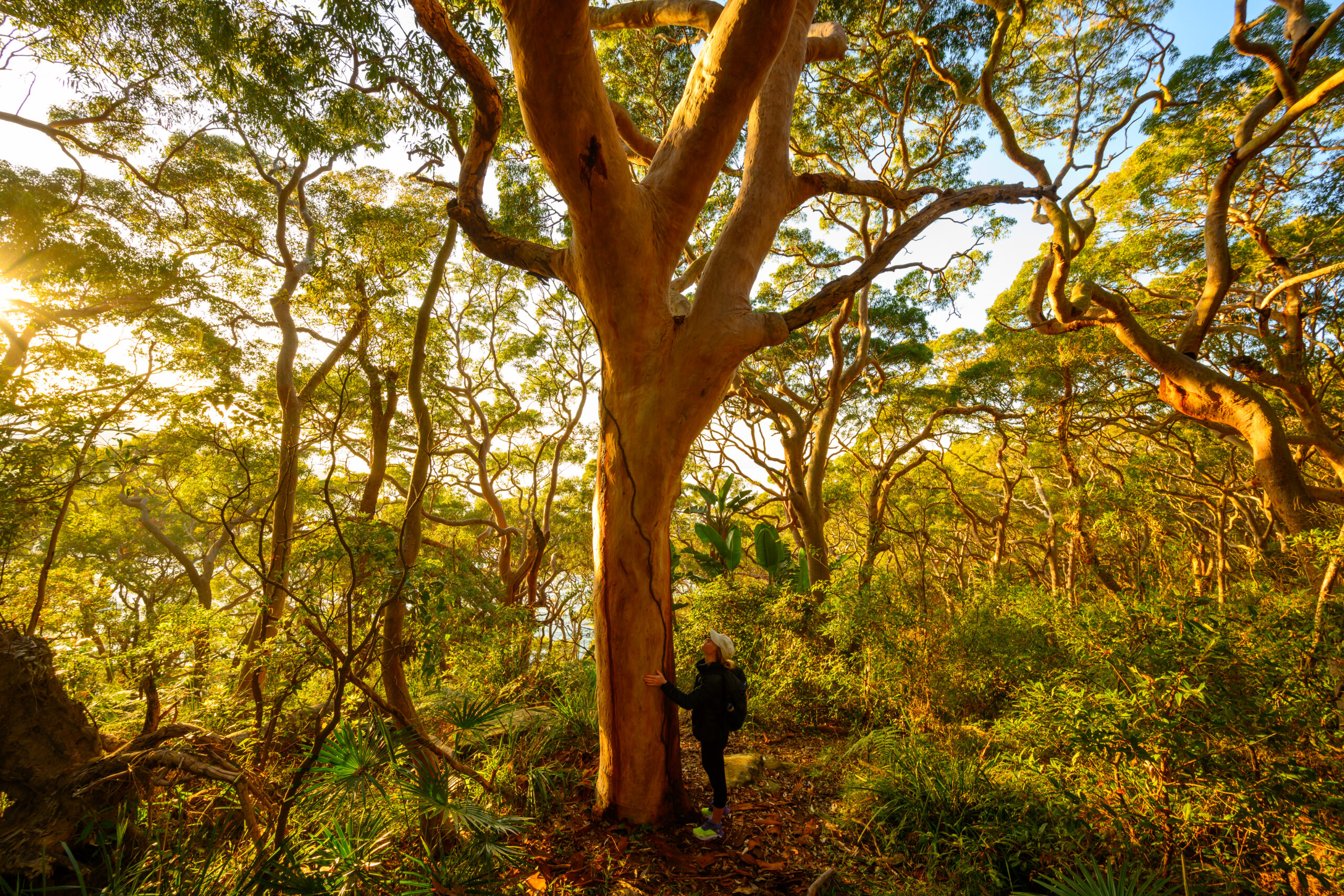The Sydney Red Gum has been named the eucalypt of the year in 2023!
Sydney red gums are also known as smooth-barked apples. They can often be seen growing out of cracks in sandstone around the Sydney area. They can grow up to 30 metres tall and usually have clusters of cream flowers in November and December each year. Sydney red gum seed capsules are 13 to 15mm long with 5 prominent ribs.




Aboriginal People from the Sydney region know the tree as kajimbourra. Sydney red gums provide numerous resources for Darug People. The bulges on the trunk can be cut off and hollowed out to make bowls. The red gum can be used as an adhesive, a sweet lolly, a toothache remedy or applied directly to sores, cuts and bites.
Like many tree species in Australia, Sydney red gums are well adapted for growth in dry conditions and poor soils. These gums have hard leaves which do not require a lot of water to grow. Their leaves are also covered in a thick waxy layer which reduces the amount of water that is lost through the surface of their leaves. Sydney red gums are also well adapted to fire. After fire, leaves resprout from special buds, called epicormic buds, found beneath the bark of the trunk. Also, after fire, this gum tree drops its seeds to the ground so that they can germinate in ash-rich soil clear from other plants which would otherwise compete for sunlight and water.
Its red windy trunks are very encompassing and charismasic as if they are welcoming you with open arms. Keep an eye out along the track for these stunning trees and give them a big hug!

